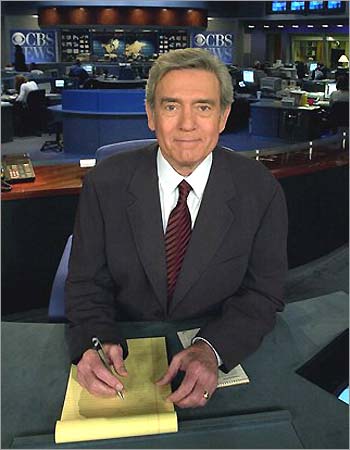Edith Wharton's Library: A Benefactor's Largess Misappropriated?
It has been reported that Edith Wharton Restoration, Inc. (EWRI) agreed to purchase Ms. Wharton's personal library for $2.6 million from British book collector George Ramsden, and that facilitating this purchase were part-time Stockbridge residents Robert G. and Elisabeth Wilmers, who generously provided financing -- a bridge loan -- to allow the transaction to occur.
Unfortunately, as with much else regarding the murky finances at The Mount, smoke and mirrors abound in this Wharton-inspired tale, and things are not as they appear.
For example, right now it is unclear precisely what the specific terms were of the December, 2005 purchase agreement with Mr. Ramsden because The Mount has so far refused to make the agreement public.
Yet, one thing is known for sure, the $2.5 million loan that allowed the transaction to take place has yet to be repaid.
Mr. Wilmers, a former CEO of M&T Bank from Buffalo, New York, with his wife, loaned the money to EWRI on November 30th, 2005, just two weeks before The Mount's CEO, Stephanie Copeland, flew to England and, with great fanfare (a New York Times correspondent was present), signed the purchase agreement with Mr. Ramsden that would bring the leather-bound collection back to the United States.
 Photo: First Lady Laura Bush Visits The Mount, April 24, 2006. From left: Stephanie Copeland, president & ceo, Edith Wharton Restoration, Inc.; Robert and Elisabeth Wilmers, benefactors; Lord Christopher Tugendhat, British investment banker (and future trustee); First Lady Laura Bush; and George Ramsden, book collector and seller. -- Credit: Kevin Sprague, Copyright 2006, All Rights Reserved.
Photo: First Lady Laura Bush Visits The Mount, April 24, 2006. From left: Stephanie Copeland, president & ceo, Edith Wharton Restoration, Inc.; Robert and Elisabeth Wilmers, benefactors; Lord Christopher Tugendhat, British investment banker (and future trustee); First Lady Laura Bush; and George Ramsden, book collector and seller. -- Credit: Kevin Sprague, Copyright 2006, All Rights Reserved.
The Berkshire Eagle reported that Mr. Wilmers "was to be paid in full by Dec. 31, 2007. He has not been paid; he declined a request for an interview this week."
Not only did EWRI fail to repay the Wilmers, but $744,700 of the loan they arranged appears never to have been used for the purpose the Wilmers specifically intended, that being to buy the Wharton collection and bring it back to its original home in Lenox.
It is clear from the inception that the bank-savvy Wilmer's notion of providing a bridge loan as a means to procure the historic library did not also encompass using the proceeds to pay the organization's monthly obligations or various other debts.
The evidence for this comes from one of The Mount's newest trustees, Lord Christopher Tugendhat, a former British politician who acknowledges being the 'facilitator' who brought the sides back together when the book deal appeared to be going nowhere. Photo: Lord Christopher Tugendhat, British investment banker (and future trustee), April 24, 2006. -- Credit: Kevin Sprague, Copyright 2006, All Rights Reserved.
Photo: Lord Christopher Tugendhat, British investment banker (and future trustee), April 24, 2006. -- Credit: Kevin Sprague, Copyright 2006, All Rights Reserved.
An investment banker and former Conservative Member of the British Parliament, Lord Tugendhat, in September 2006, became an EWRI trustee, one of three newly appointed to the board.
Shortly thereafter, for the The Mount's Winter 2007 Annual News & Financial Report, the life peer penned an article aptly entitled "Christopher Tugendhat recounts his pivotal role in the library acquisition." [p.8]
In the following excerpt, the British businessman describes Robert Wilmers' intentions regarding the library acquisition:
"It was a few months after this that Robert Wilmers re-entered the scene with a crucial intervention. He had kept in touch with what was going on and decided that decisive action was required. Would a deal be possible, he asked, if the financial means were forthcoming, or were there other factors in the way? I told Stephanie [Copeland] I was sure a deal was attainable since I believed we had won George's [Ramsden] confidence on all the non-financial issues. With the backing of Robert and Elisabeth [Wilmers] a revised proposition was then produced designed to enable the hands not just to touch but to shake. So again I took the train to York [England], again I was let loose among the books and again Jane [Ramsden] prepared a delicious lunch. This time though the denouement was very different. When I told George what The Mount had in mind, he immediately indicated that so long as the lawyers and accountants were happy a deal would be forthcoming. And so it was."
From Lord Tugendhat's description, it is plain that Robert Wilmers' intention was to create the 'financial means' and make them 'forthcoming', all to make possible a 'deal' that would result in The Mount's acquisition of the collection.
There is not the slightest implication in Lord Tugendhat's memoir that Mr. Wilmers was intending any of his bridge loan to finance The Mount's operations or to cover any debt.
According to an individual familiar with EWRI, the original purchase agreement stipulated a price of £1,500,000 (British pounds or GBP) to be paid the bookseller in exchange for his collection of Ms. Wharton's extensive library of colorful leather volumes.
At the currency conversion rate in effect that day, December 12th, one British pound (GBP) was equal to 1.75530 US Dollars (USD), and meant the collection was valued at over $2.63 million USD.
Rather than paying Mr. Ramsden the entire sum though, EWRI instead paid him £1,000,000 at the closing and signed a note committing itself to pay the remaining £500,000 in ten annual installments of £50,000.
In American dollars, that meant a purchase price of $2,632,950 with Mr. Ramsden receiving upfront $1,755,300 USD (£1,000,000 x 1.75530), with the 10-year note then worth $877,650 at $87,765 per installment.
(With currency exchange now strongly favoring the British pound, the cost in American dollars today to pay off that note will be considerably higher.)
John Keegan, CPA, EWRI's long-time auditor and tax preparer, of the Pittsfield firm, Lombardi, Clairmont & Keegan, claims that the £500,000 note to Mr. Ramsden is interest-free.
When it was pointed out that EWRI's FY2007 IRS Form 990 [p.24] shows the note being carried on The Mount's books at 8% [p.25], with the total number of British pounds owed Mr. Ramsden seemingly being compounded annually, Mr. Keegan said that standard bookkeeping practice requires notating and calculating interest, whether or not interest is actually being charged.
At close of FY 2007, EWRI's Form 990 shows the amount owed Mr. Ramsden had risen to £607,254 [p.24].
Mr. Ramsden is supposed to receive his final installment by Dec. 12, 2015, but according to The Berkshire Eagle: "The Mount paid him in 2006, but Ramsden did not receive his second payment last year."
Meanwhile, the unsecured $2,500,000 bridge loan from Mr. Wilmers, the one used to pay Mr. Ramsden his initial $1.75 million, is being carried at 4.04%, according to the Form 990, and is 'Due on demand' [p.25].
After subtracting the $1.75 million paid Mr. Ramsden from the $2.5 million loaned EWRI by Mr. Wilmers, there still remains exactly $744,700 the dispersal of which has yet to have had a public accounting or substantive explanation by EWRI officials.
While for certain there were expenses related to packing, securing and insuring the valuable library, as well as shipping all that paper and leather 3,500 miles to Lenox, Massachusetts from Settrington, England, none of that cost would account for the bulk of the 'missing' money.
Susan Wissler, vice president of The Mount, in an interview with The Berkshire Eagle, said "the balance went to cover some operating deficit."
Not much of an answer, nor very detailed, from the person whose signature actually graces the Form 990 return to IRS.
So the question remains, just what did happen to all that money? <<<<<
Related Articles:
Edith Wharton Restoration: Living the 'Gilded' Life While Wallowing in Massive Debt.
Edith Wharton to IRS: "Mount This!" -- Failure to report 'fringe benefits' could leave CEO, Trustees at The Mount liable.
Labels: Berkshires, Christopher Tugendhat, Edith Wharton Restoration, George Ramsden, John Keegan CPA, Lenox, literary arts, not-for-profit, Robert G. Wilmers, Stephanie Copeland, Susan Wissler, The Mount











